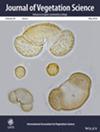The Woody Invasive Plant Neltuma juliflora Influences Plant Species Richness and Soil Chemistry in Botswana
Abstract
Aims
Neltuma juliflora (formerly Prosopis juliflora) was introduced to Botswana's Kgalagadi District in the 1980s to combat desertification and bind sand dunes. The species has since spread to the adjacent Gantsi District, and it is currently a pervasive problem in several arid and semi-arid regions. However, studies on the ecological consequences of N. juliflora invasion in Botswana are scarce. We assessed vegetation community characteristics and soil variables in paired invaded and uninvaded plots to explore the impact of N. juliflora invasion.
Location
Savanna rangeland, Gantsi District, Botswana.
Methods
We established 10 × 10 m pairwise plots of invaded (with N. juliflora; n = 20) and uninvaded (without N. julifora; n = 20) communities, and compared them in terms of vegetation characteristics (richness, density, diversity, composition and dominant native species) and soil properties (soil carbon, magnesium, potassium, phosphorous, calcium, sodium, pH, nitrogen and cation exchange capacity) and assessed an invasion index.
Results
Invasion of N. juliflora was associated with a significantly lower total species richness (−19%), native species richness (−26%), forb species richness (−34% lower), total plant density (−22%), and native plant density (−29%), while grass species richness and density were unchanged. Diversity indices were lower in invaded plots considering all plant species, native plant species and forbs. Total nitrogen and cation exchange capacity were 36% and 40% higher in invaded plots, respectively.
Conclusions
Our results suggest that N. juliflora invasion is associated with lower native biodiversity and higher values for some soil chemical properties. As uninvaded plots had denser and taller stands of native tree species, maintaining and protecting native vegetation will likely help slow invasion. Further research is needed to understand ongoing impacts and quantify the effect of N. juliflora invasion on ecosystem carbon storage and biodiversity of non-plant taxa.


 求助内容:
求助内容: 应助结果提醒方式:
应助结果提醒方式:


